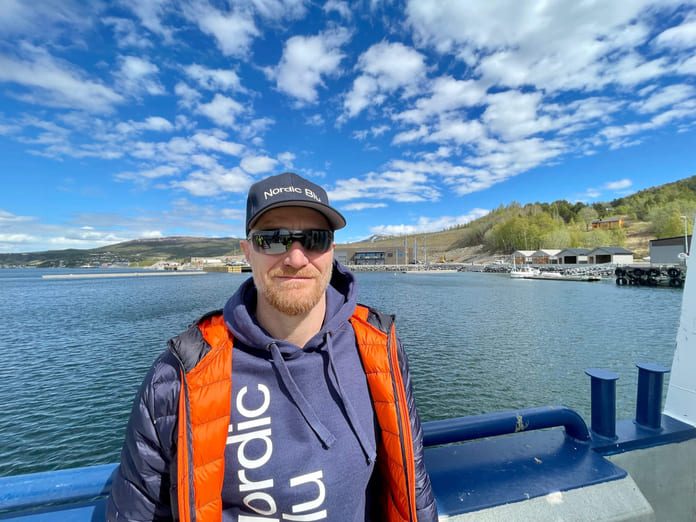Salmon farmer Geir Wenberg launches a broadside at land-based salmon farming.
“From a sustainability perspective, farming salmon on land is unthinkable. There is no way to defend pumping the sea ashore. Having the salmon on land is as unnatural as moving the cow to sea. The need for space is enormous and the costs exceed reason,” Wenberg told SalmonBusiness.
Wenberg, an independent farmer with a handful of licenses located outside of Bodø, Northern Norway, believes the energy consumption of land based farms is indefensible.
“Today, for example, people spend approximately two million kilowatt hours producing four million smolts in a flow-through plant where the area requirement is 8,000 square meters. This corresponds to approximately 3,000 tonnes of biomass, one tenth of the largest land-based projects. There are projects on land where there are plans to produce more than 30,000 tonnes per year. year which may require 150,000 square meters. Three football pitches at one facility,” the breeder points out.
Major biological challenges
“Such facilities will probably cost more than five billion kroner (€480 million) and the risk is enormous. If you write off such a plant in 30 years, the production cost will be beyond the alternative in the sea.”
“40 years of experience with the production of smolt on land has shown us that the biological challenges are great. Today, we are able to handle the smolt plants in a good way, but no one has managed to produce large quantities of food fish on land. I work for development and innovation, but today we must realize that we have not found the solutions for moving the fish ashore,” he continued.
“I am aware that my attitude will provoke and probably create debate, but as a farmer who has spent his whole life in the industry, it is important for me to say what is right. The fish must be in the sea,” said Wenberg.

Greener
Wenberg believes that climate change is paramount – and no less in fish farming.
“Our industry must become greener and work for the best possible solutions. I will do everything I can and use everything I have learned to contribute to it. I would go so far as to recommend to the entire industry and everyone who has invested and put their money in land-based farming withdraw.
This train has started running a long time ago. Isn’t this a little naive?
“No, it is not naive to ask people to take care of their money. It is very unwise to invest in the land-based projects,” replied Wenberg.
“We must have production of smolt on land, other solutions do not exist as of today, but we must make the imprint as small as possible.”
Offshore
Wenberg highlights the Norwegian coast’s natural advantages.
“The future production of farmed fish must take place as we do today because we have fantastic natural conditions along the Norwegian coast. The future growth on which we depend must take place in closed and semi-closed cage systems.”
At the same time, he warns against investing in salmon farming offshore.
“Moving the industry to sea is also not a good solution. From an environmental perspective, it is wise to be close to the workforce, skills, logistics such as roads, electricity, railways and aircraft.”
Why are offshore facilities not a good solution?
“Because it is very expensive and unnatural when you’re trying to create a greener world to move away from labor, slaughterhouses, roads, railways and planes,” he concluded.



